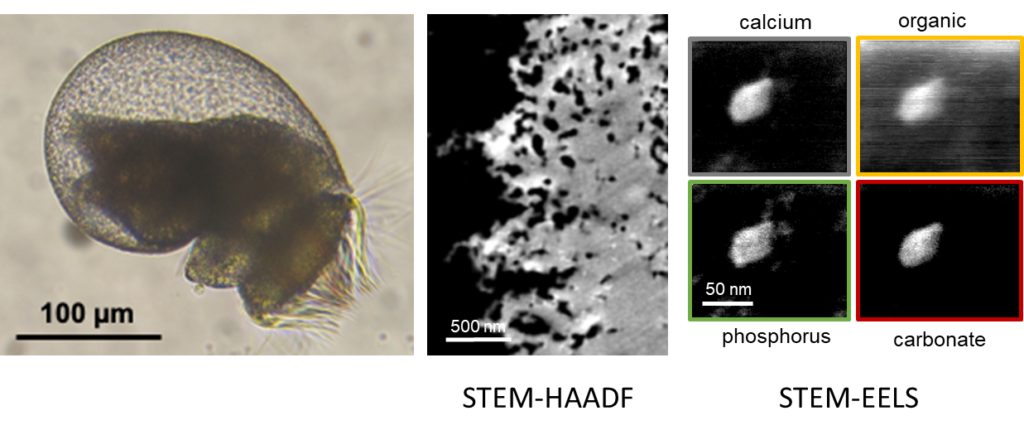Many multicellular animals secrete a mineralized skeleton, a composite material in which the mineral phase, carbonated, phosphated or siliceous, is predominant. It is generally accepted that carbonates, which are abundant in protostomian invertebrates (shell of mollusks, shell of crustaceans) are rather associated with chitin, a saccharide polymer, while phosphates, which are mainly present in vertebrates, are linked to collagen, a structural protein. Although this dichotomy admits some exceptions, it appears as a general principle which reflects a clear evolutionary separation between the two mineral systems, even distinct and independent origins.
This work carried out on the European abalone Haliotis tuberculata reveals for the first time the presence of an amorphous phosphate phase – similar to the amorphous layer associated with bone apatite – intimately linked to the calcium carbonate of the larval shell of this gastropod. This phosphate phase is essential in the early stages of larval shell construction. It plays a role in the temporary stabilization of the amorphous carbonate phase, but above all, it could be the vestige of a mixed amorphous precursor (CaPCO3) at the origin of the carbonate and phosphate systems, each of which would have been selected by specific macromolecules (proteins). Beyond the obvious evolutionary aspects that show the interdependence and plasticity of the two biomineral systems, the discovery of mixed amorphous phases is a source of inspiration for the synthesis of crystalline biomimetic materials of complex shapes.

